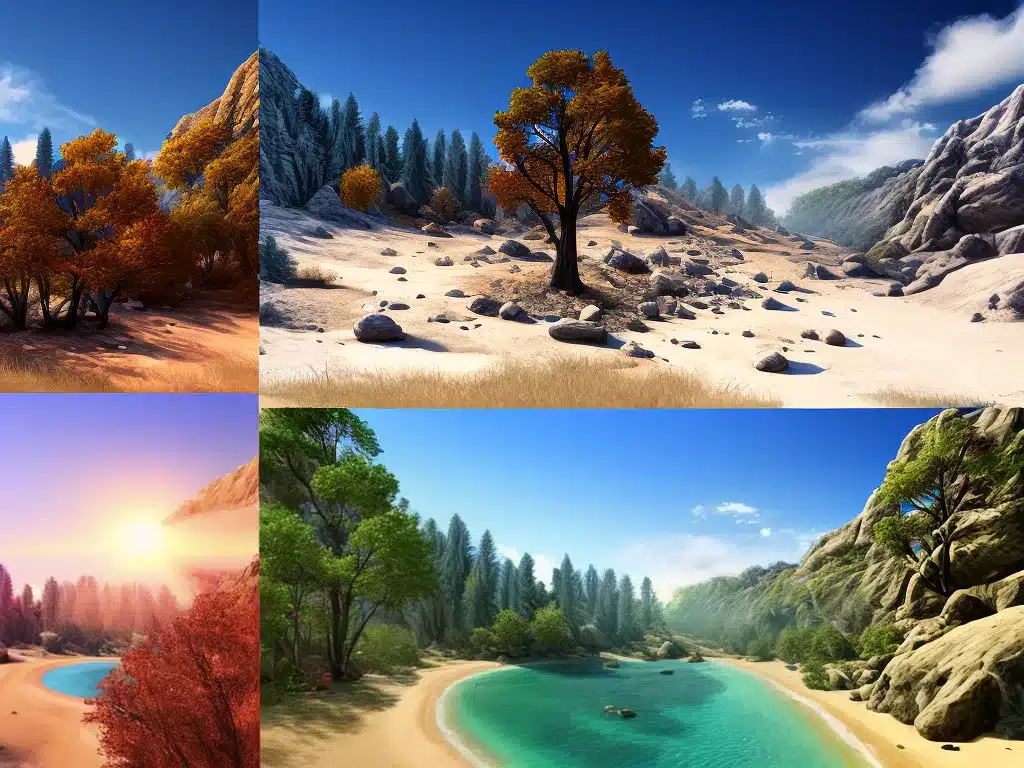Introduction
AI image generation is an exciting new technology that is transforming digital art and design. Powerful generative artificial intelligence (AI) models can now create original images and artwork from text descriptions. This technology has opened up amazing new creative possibilities for graphic designers, artists, and casual creators alike. In this article, I will provide an in-depth look at how AI image generation works, examine key benefits and applications, and explore the profound ways this technology is changing graphics.
How AI Image Generation Works
AI image generators utilize deep learning algorithms, specifically generative adversarial networks (GANs), to produce images. Here is a high-level overview of the technical process:
-
The system is trained on huge datasets of images, learning the visual patterns and features that comprise different objects, scenes, styles, etc.
-
The user provides a text prompt describing the desired image.
-
The AI generator creates an image matching the text description by piecing together visual components learned during its training.
-
The AI refines and improves the image through an adversarial process, optimizing until the output matches the request as closely as possible.
Key players in AI image generation include DALL-E, Stable Diffusion, and Midjourney. Each uses advanced deep learning, but they vary in training data, model architecture, and generation approach.
Benefits and Use Cases
AI image generation delivers several major benefits:
-
Creativity and idea generation – It acts as a source of inspiration and accelerated ideation for designers.
-
Time and cost savings – It provides images instantly versus slow and costly manual creation or commoditized stock imagery.
-
Accessibility – It democratizes graphic design, allowing non-artists to easily produce custom visuals.
-
Personalization – Unique, tailored images can be created on-demand based on specific needs.
-
Iteration and experimentation – Images can be quickly generated, evaluated, and refined through different text prompts.
Key use cases include:
-
Concept art and mood boards for graphic design projects
-
Social media posts and ads with custom on-brand visuals
-
Illustrations for books, articles, presentations, and more
-
T-shirt designs, logos, posters, and other merchandising
-
Game asset and character concept art
Transforming Graphic Design Workflows
AI image generation is profoundly transforming graphic design. Designers can rapidly iterate ideas by generating numerous visual concepts from text briefs. They can explore directions that would be time-prohibitive manually. The creative process becomes more iterative, collaborative, and feedback-driven.
The role of the designer evolves from manual creator to high-level visual strategist – scoping projects, providing art direction through textual prompts, reviewing output, and identifying the best images to refine. Human creativity is augmented but still essential.
This AI-assisted process enables designers to produce visual content and deliver projects faster. It also allows them to focus on providing creative and strategic direction rather than production.
Concerns and Considerations
Despite its promise, AI image generation raises concerns:
-
Training data – Systems must be carefully audited for biases and copyrighted material in training data. Ethical sourcing is crucial.
-
Copyright and attribution – Usage rights for AI-generated images remain legally ambiguous. Proper artist attribution is difficult.
-
Misuse potential – The tech could be used to spread misinformation or inappropriate/offensive content.
-
Economic impact – AI could disrupt industries like graphic design, illustration, and photography. Re-training may be required.
To responsibly leverage the power of this technology, creators should:
-
Use generators trained on ethically-sourced data.
-
Review outputs to avoid problematic content.
-
Advocate for policies that protect individuals’ rights.
-
Consider providing attribution if reasonable.
-
Be transparent about AI usage.
The Future of AI Image Generation
AI image generation is still early stage but improving rapidly. As models are trained on more data, output quality and capabilities will keep advancing. In the future, AI promises to become an integral creativity multiplier across many visual fields.
However, thoughtfully managing this technology remains imperative. As the space matures, best practices must emerge around topics like copyright, attribution, content moderation, and transparent AI use disclosure.
If stewarded carefully, AI image generation can open up creative potential and efficiency gains at scale. The coming decade will reveal more about both the promise and pitfalls of this potentially game-changing technology.













